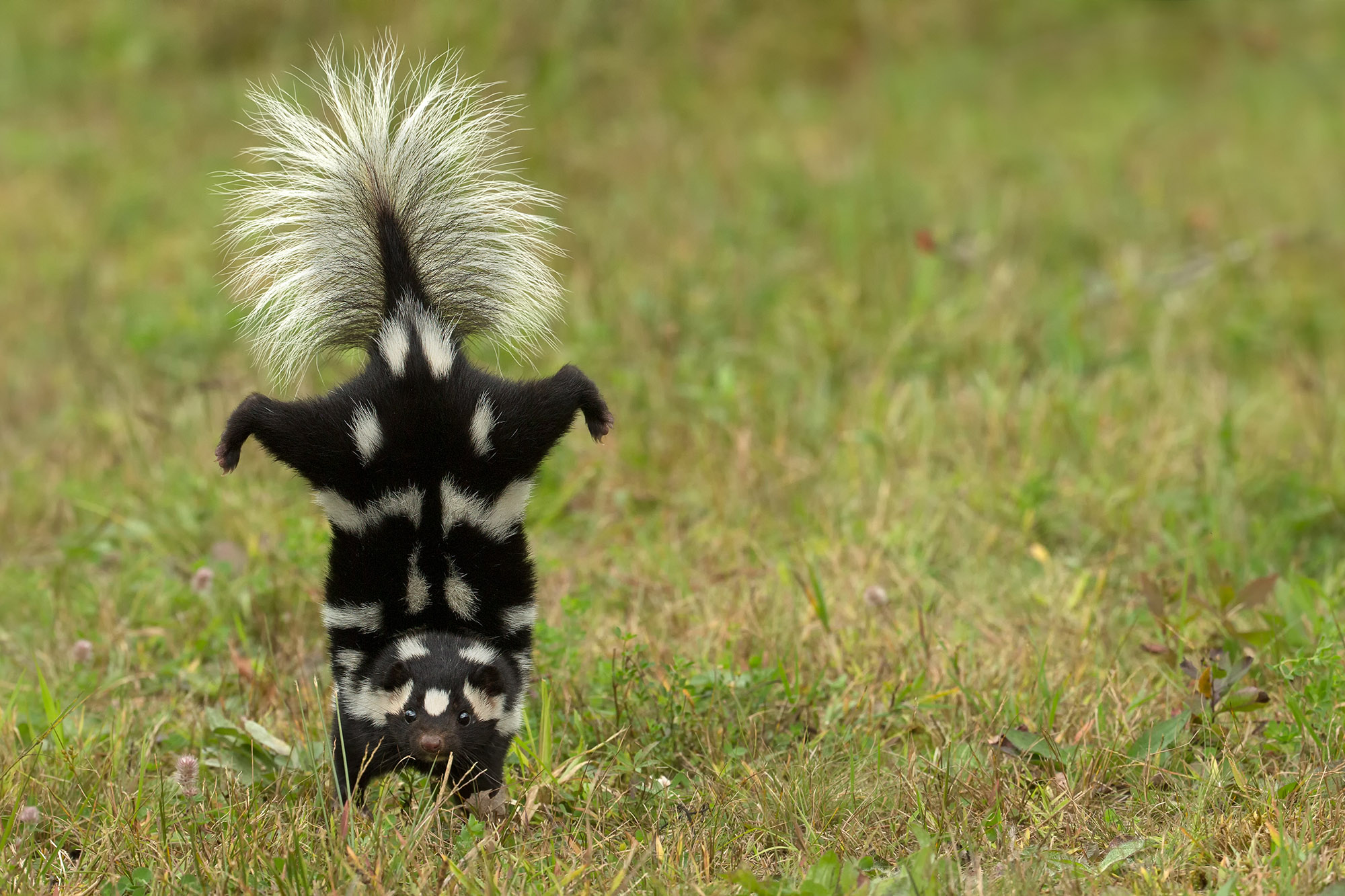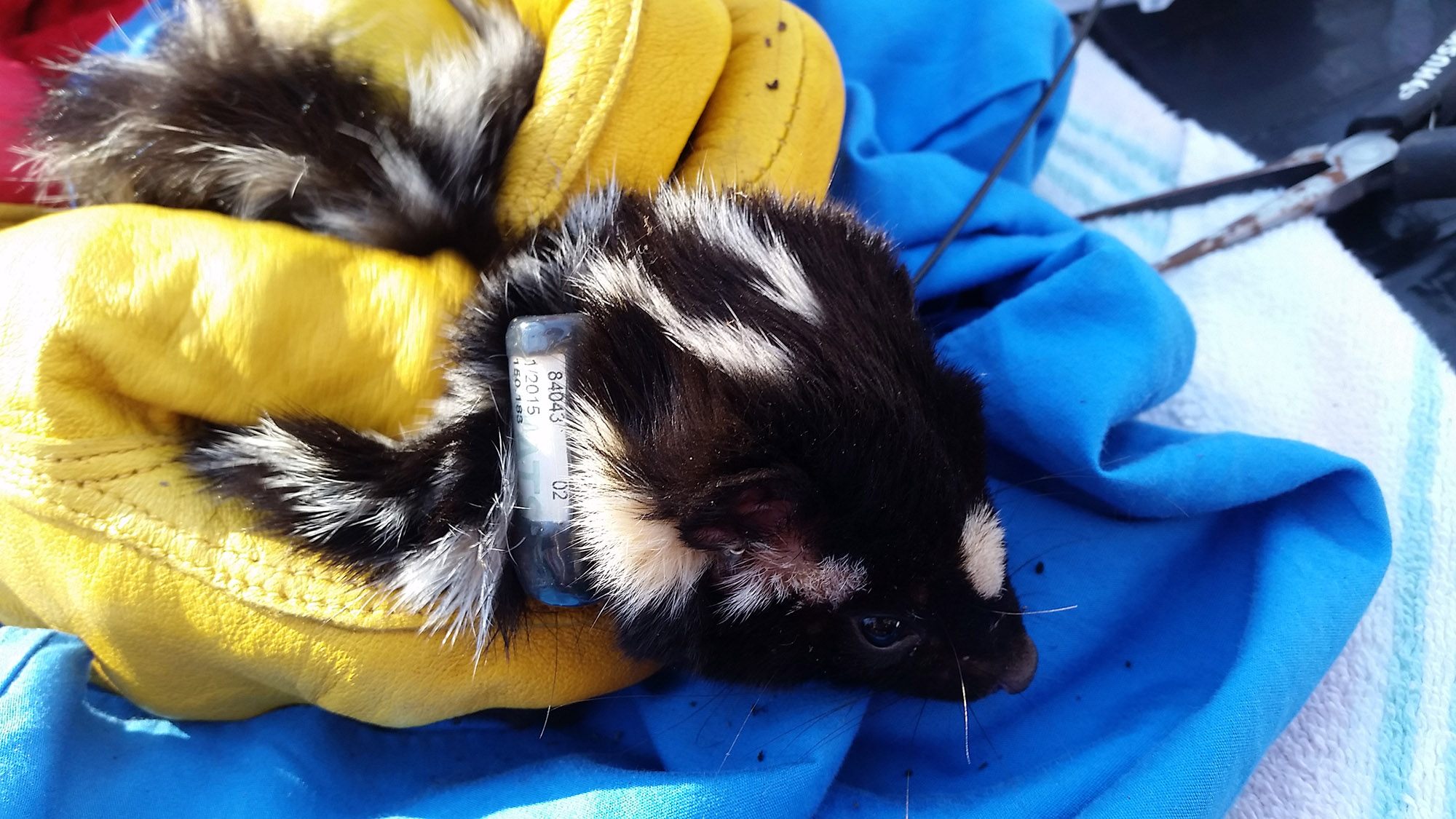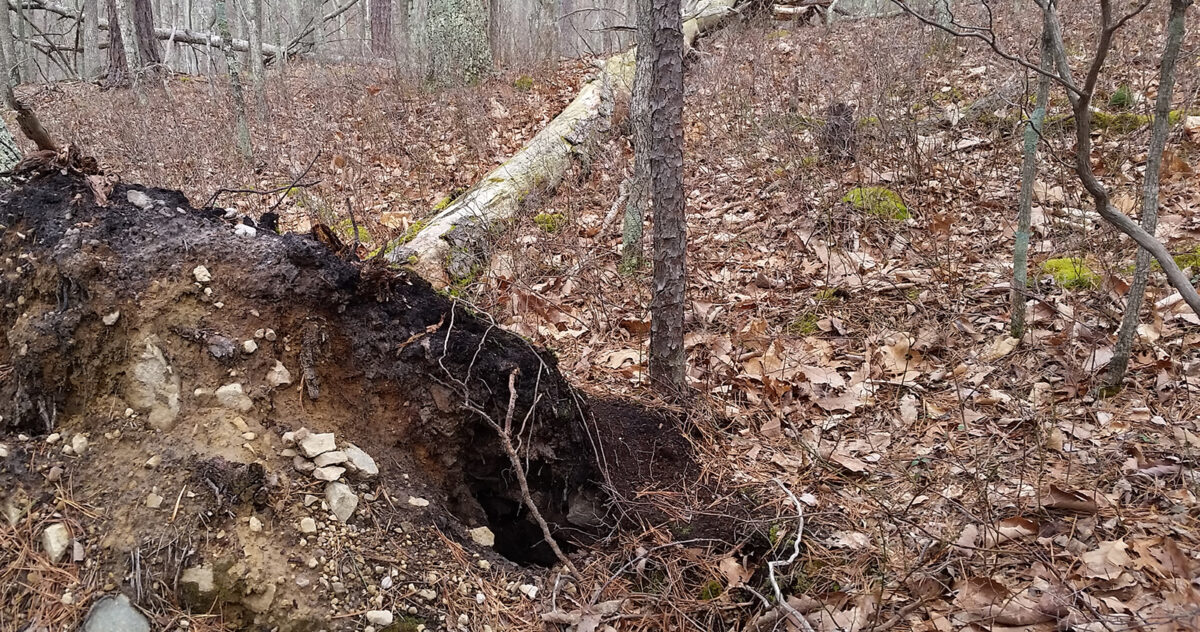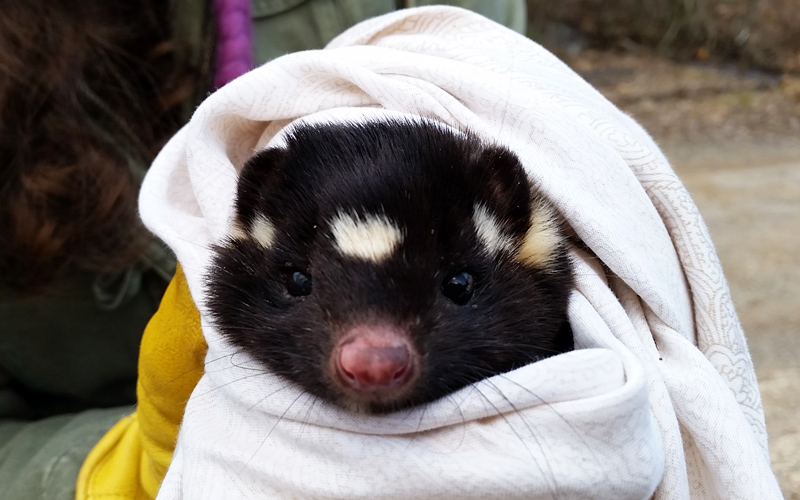By Molly Kirk/DWR
Have you ever seen a skunk do a handstand? If you have, you’ve witnessed one of Virginia’s more elusive mammals, the Eastern spotted skunk (Spilogale putorius). When you think skunk, you might think of the distinctive white stripes of the very commonly seen striped skunk (Mephitis mephitis), but spotted skunks are an entirely different creature. And it’s just in the last 10 years that wildlife biologists in Virginia have gotten a deeper understanding of this unusual animal.

A spotted skunk showing its unusual handstand posture. Photo by Shutterstock
When spotted skunks started showing up on trail-camera images captured during a population survey of golden eagles in the early 2000s, biologists began to get curious about this species’ population in Virginia. Not much was known about how many spotted skunks there might be in their range in the Appalachian Mountains of western Virginia, and even less about how they lived. So in 2013, Virginia Tech’s Department of Fish and Wildlife Conservation started a research project on the Eastern spotted skunk with funding from the Virginia Department of Wildlife Resources (DWR). The study sought to determine the population status of spotted skunks in Virginia, investigate forest and landscape conditions that influence their distribution, and study their movement patterns and habitat selection.
Eastern spotted skunks were once common throughout the central and southern United States, but populations began to decline in the 1940s. Biologists hypothesize that decreases in habitat availability; increased competition with striped skunks, raccoons, bobcats, and coyotes; and disease led to the decline.
In 2017, project leader Emily Thorne and other authors published their study results, “Winter Habitat Associations of Eastern Spotted Skunks in Virginia,” in the Journal of Wildlife Management. The 2014-2015 study was also the focus of Thorne’s Ph.D. dissertation, Spatial Ecology of a Vulnerable Species: Home Range Dynamics, Resource Use, and Genetic Differentiation of Eastern Spotted Skunks in Central Appalachia. Over two years, Thorne and partners captured, radio-collared, and tracked 16 male and 10 female spotted skunks and estimated home-range size for 10 males and eight females.

A spotted skunk with a tracking collar in place. Emily Thorne Photo
“I wasn’t familiar with the species, and nobody had ever really looked at them in Virginia and West Virginia before,” Thorne said. “So, everything we learned was pretty much new information. We already knew that they would use tree dens and underground burrows, and we thought they were habitat generalists, using whatever habitat they found. What we didn’t expect was that that’s not entirely true. They will use a lot of different den sites, but it varies depending on the season, especially with female skunks. During their mating season, I mostly tracked them to tree cavities high up in a tree. They were frequently 20 feet up or more, and typically in hardwood trees.”
Pregnant female spotted skunks would then move to underground burrows in the late spring to have their litters. When the juvenile skunks were mobile, the females would move the family to a habitat of rocky outcrops. “When the young leave the mother and go off to be their own little skunks, the female then goes back to pretty much just hunting and foraging. She tries to eat a whole bunch to get nice and fat for the winter just so she can do it all over again,” Thorne said. “These patterns of habitat use were one of the coolest findings of the study.”

A spotted skunk den. Photo by Emily Thorne
Eastern spotted skunks could be mistaken for the much better known and more widespread striped skunk from a distance, as it has the same black and white coloring. But while the striped skunk has continuous white stripes extending down its body, the Eastern spotted skunk’s white shows up as broken stripes, or distinct blotches, along its body. Spotted skunks are also smaller than the striped, reaching a maximum weight of one to two pounds.
“They don’t behave like striped skunks at all,” said Thorne. “Striped skunks are slow and lumbering, and they’ll hang out in your back yard or an open field. But the spotted skunks are very secretive and elusive. They actually act more weaselly than skunky.”
Thorne actually got to know spotted skunks very well during the study, in which they trapped spotted skunks at 91 sites during the early months of 2014 and 2015, equipping them with radio collars to track their movements and capturing images and video of them at baited camera sites. “They just have a whole different personality than what you would think,” said Thorne. “They’re really funny and interesting; you get to know the individuals when you catch them and track them for a couple years. They do a little hoppy dance; they play and climb. We’ve got them on videos playing with branches and sticks. We put flagging markers at their dens, and we got one skunk on video playing with the flag.”
Thorne noted that spotted skunks exhibit a behavior while trapped that was unusual. If they discovered they were contained, they would gather up leaves from around the trap, build a nest, and go to sleep. “When we’d show up at the trap site and see bare spots in the ground around the trap, we’d know there was a spotted skunk in there because it’s the only animal that does that,” Thorne said.
While spotted skunks do have a persistent “skunk” odor, Thorne noted that she rarely got sprayed by one while handling them. “They’ll do the handstand before spraying as a warning,” Thorne said. “That’s their way of saying ‘Leave me alone!’ If they’re trapped and startled, they definitely will spray, but mostly they just want to buy enough time to get away from the threat.”

One of the spotted skunks Emily Thorne captured in her study.
Thorne’s research indicated that spotted skunks are dependent mostly on a thick understory forest habitat, probably to provide protective cover from predators. “We rarely found them out in the forest where it’s just completely open understory,” Thorne said. “The vegetation they really like when they’re underground or in the trees is mountain laurel, and sometimes rhododendron. I would say that prescribed burning would benefit them because it helps that understory grow. There was a prescribed burn at one of my sites, and within days of the burn, we were radio tracking spotted skunks back into the burned area. So, the fire didn’t push them out of the area, which was an exciting thing to find.”
Thorne also examined the genetics of captured individuals “to determine relatedness among individuals and whether inbreeding was occurring,” her dissertation stated. “Finally, I compared the relatedness of pairs of spotted skunks to the distance between their locations and found that skunks that are located on the same mountain range are more closely related to each other than to skunks on different mountain ranges. These results will inform wildlife managers on how to provide spotted skunks with the habitat resources they need to survive and reproduce successfully, thus promoting skunk conservation.”
In 2021, Thorne and co-author W. Mark Ford published the article “Redundancy analysis reveals complex den use patterns by eastern spotted skunks, a conditional specialist” in the journal Ecosphere. In it, Thorne details how spotted skunks’ unique habitat choices, which depend on factors such as weather and breeding season, can inform wildlife managers in their habitat management for the species.
To be able to effectively manage habitat for a wildlife species, biologists must first understand what habitat needs that species has. Thorne’s study provides some guidelines to help the spotted skunk in the future.


